

China presents a complex and evolving financial crime risk landscape shaped by its unique political-economic system, rapid technological development, and growing global economic integration. The 2019 FATF evaluation recognised China’s progress in strengthening its anti-money laundering framework, but significant vulnerabilities remain that create both domestic and international financial crime risks.
Key areas of concern include the prevalence of corruption despite ongoing anti-corruption campaigns, the rapid growth of digital payment systems that outpace regulatory oversight, and the use of Chinese financial networks for international money laundering operations. The country’s capital controls, while limiting some money laundering risks, also create incentives for underground banking systems and informal value transfers that facilitate illicit flows.

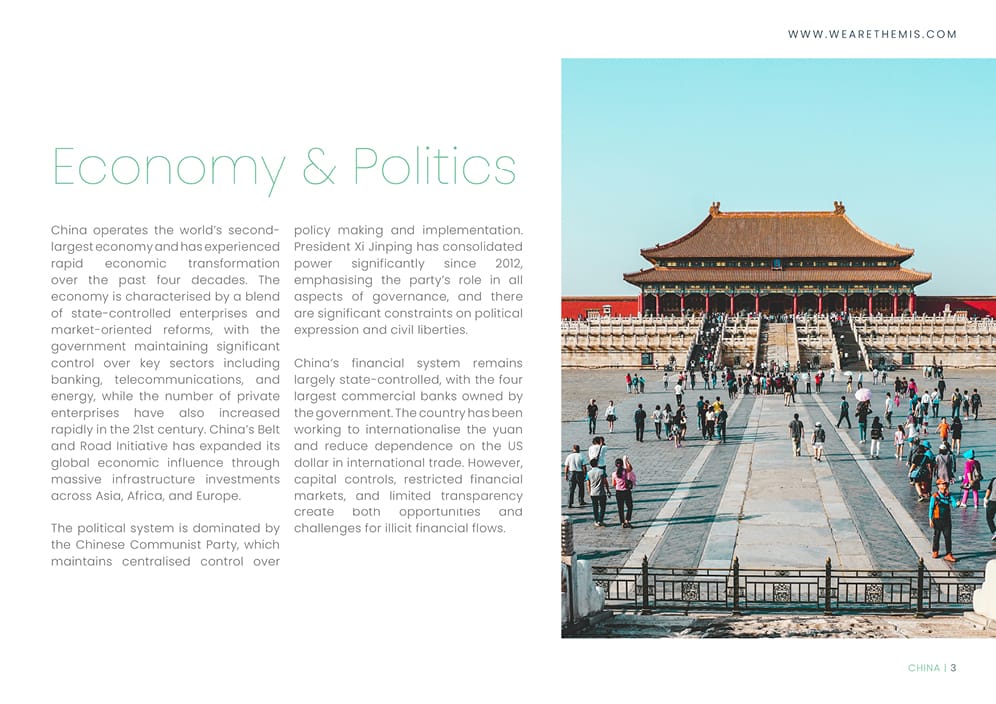
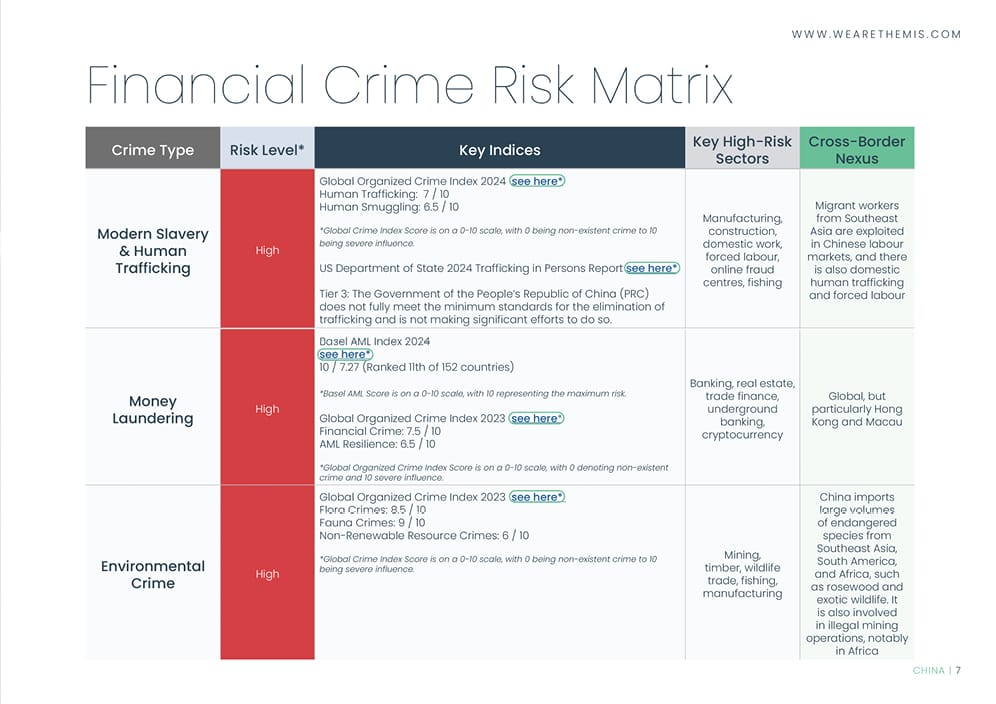
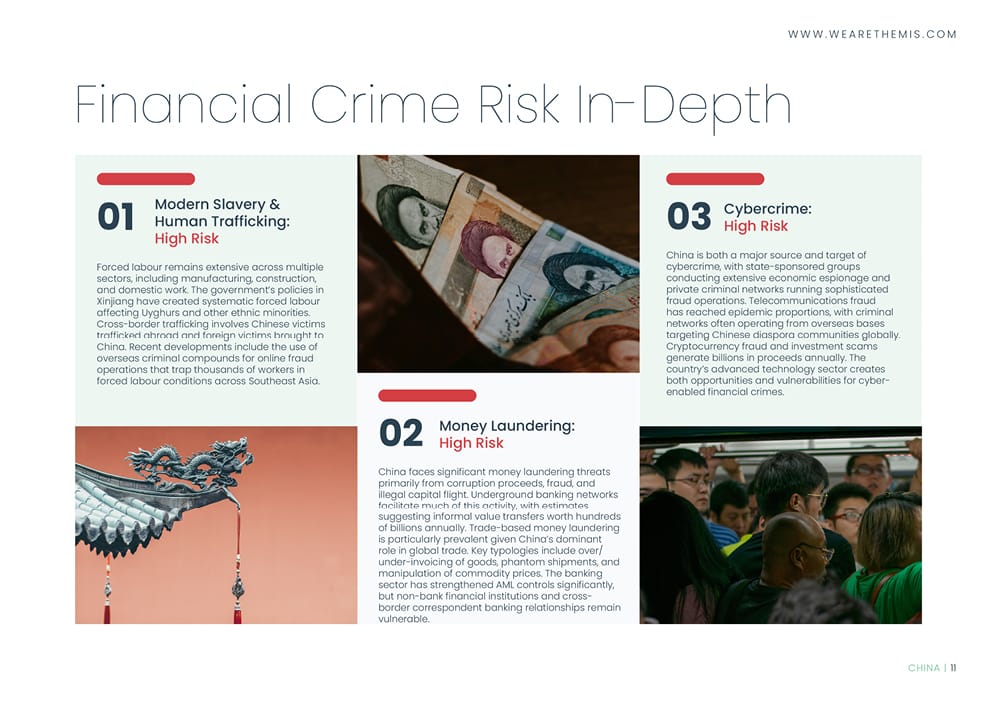

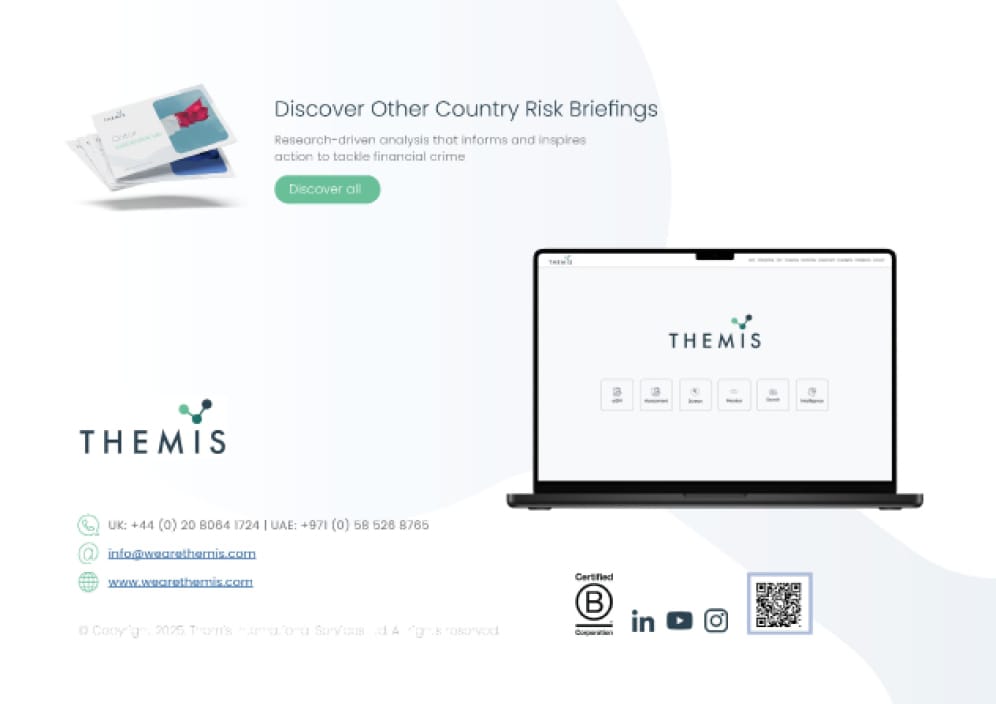
Primary methods of abuse
High-risk sectors
Relevant regulatory responses
Financial crime & compliance teams
Investment committees and operations teams assessing investment into new markets and/or potential expansion into new markets
Financial institutions onboarding clients across jurisdictions
Consultants and advisory professionals
Enhanced due diligence teams
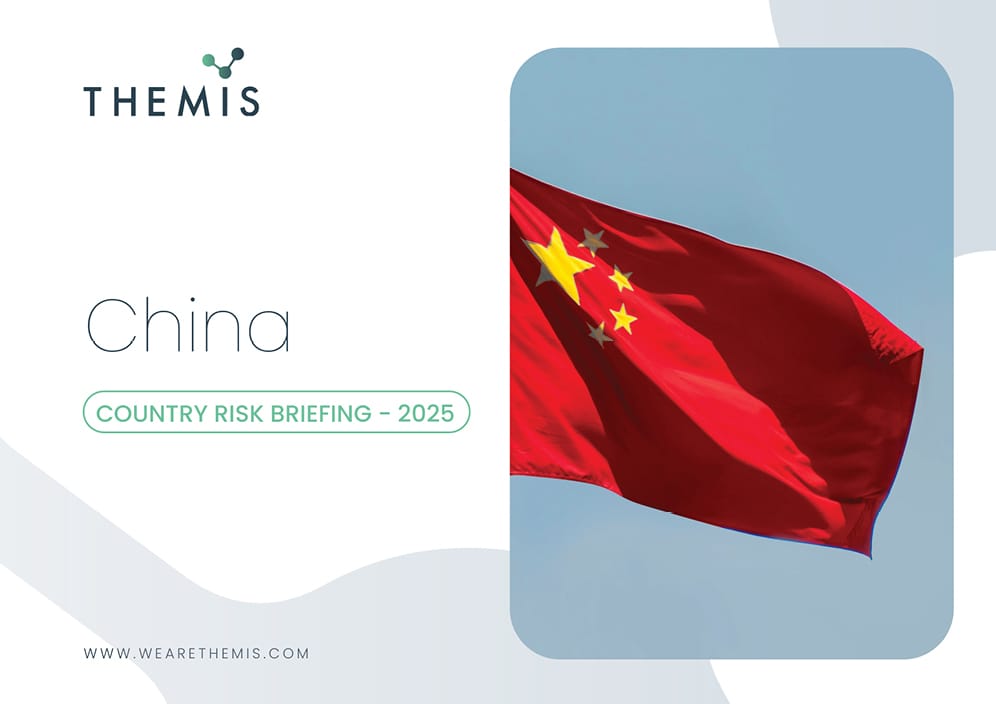


Comprehensive jurisdictional threat overview
In-depth assessment of financial crime typologies such as money laundering, fraud, terrorist financing, tax crime and more.
Detailed sectoral risk analysis
Sector-by-sector evaluation of risk exposure, with the option to zoom in on specific industries (e.g. crypto, real estate, the precious metals sector, legal and other professional business services).
Typology deep dives and red flags
Detailed analysis of real-world typologies, high-risk behaviours and jurisdiction-specific red flags.
Customised watchpoints and recommendations
Forward-looking insights and actionable advice tailored to your business model, client profile, or regional footprint.
